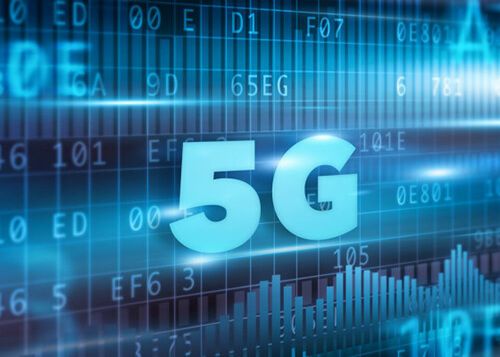5G Technology Takes Us Into Industry 4.0

For many years, we have been watching sci-fi movies, where technology has become more popular and blends perfectly with everything around us.
We all know that intelligent virtual reality assistants and healthy machines will save us from the monotonous process and meet all our needs.
Many people expect that with the advent of 5G, we will see these developments, especially towards Industry 4.0, where everything will be interconnected, processed, and digitized.
5G requirements
It turns out that all of Europe is curious about 5G. We see that data usage doubles every year, and consumer services (such as live broadcasting) constitute the vast majority of this data stream. When the days of using 4K and 8K imaging become more frequent, data consumption will further increase.
The biggest feature of the 5G interconnected world and enterprise environment is the ability to connect billions of devices to present the Internet of Things (IoT).
This type of connection can significantly improve the automation capabilities of the industry and will enrich new levels of digital transformation, such as augmented and virtual reality, robotics, instant translation, education, and e-health applications.
So how will 5G bring us to a new level? From a language point of view, the transition from 4G to 5G seems to be a small step, but from a technical point of view, the difference between the two is huge.
5G provides the ultimate mobile broadband (eMBB) called enhanced, which is up to 20Gbps. Therefore, it can provide 10 times faster speed than 4G and can download 2 hours of movies in 3 seconds.
5G also provides a more stable connection and one-tenth lower latency than 4G LTE. These functions are essential for critical machine-type communication (cMTC) used in remote production, factories, and other large industrial control operations.
Through the communication of a very large machine type, the scale of the link is further improved, providing 1 million connections per square kilometer (10 times that of 4GLTE).
By dividing the physical network into many virtual networks, 5G may provide a more flexible structure by enabling network segmentation, which allows operators to use the correct partition according to their work needs.
Therefore, enterprises will have the opportunity to use this flexibility to effectively create their own private 5G networks.
Although this may seem unbelievable, there are some challenges that mobile network providers and organizations should consider.
So far, 5G services, which have been limited in use, have used frequencies below 6 GHz. Therefore, this transition will be an upgrade of the mobile smart device network, but it will still not reveal all the bandwidth capabilities of 5G technology. The millimeter-wave (MMWave) spectrum must be available to reveal these characteristics.
The real 5G consists of frequencies below 6 GHz and millimeter waves. This combination will happen all over the world. We estimate that by 2021, millimeter waves will be put into use in all economically developed countries/regions. Uses other than smartphones require millimeter waves.
Millimeter waves are included in applications in different industries and will become part of public and private 5G networks. The sharing (DSS) function will update the existing 4G range and use it with 5G.
According to research, by 2035, 5G will support up to 12.3 trillion US dollars (up to 9.3 trillion euros) of products and services in retail, healthcare, education, transportation, and entertainment.
It is estimated that by 2035, the 5G supply chain will generate up to 3.5 trillion U.S. dollars (2.65 trillion euros) in revenue and provide 22 million jobs. From 2020 to 2035, 5G will bring up to 3 trillion U.S. dollars (2.27 trillion euros) in global GDP.
So, in addition to smartphones, in which areas will this growth become a reality?
The field of use varies from industry to industry. Through IoT connections in smart factories and production departments, automation and efficiency can be raised to a new level.
With the help of autonomous operations, autonomous vehicles, and remote imaging technology, 5G can revolutionize the logistics and transportation industries.
In retail, augmented reality provided through 5G networks can change the shopping experience and enable IoT-connected devices to play an important role in the supply chain.
In Europe, many industries are related to the introduction of 5G networks. Therefore, now is the right time for your company and department to plan new properties and how these technologies can gain a competitive advantage through the efficiency, productivity, and work environment that mobile employees provide.
Besides the 5G Technology Takes Us Into Industry 4.0 article, you may also be interested in the below articles.
What is the difference between WIFI and WLAN?
Summary of 41 Basic Knowledge of LTE
What Is The 5G Network Slicing?

2 Responses